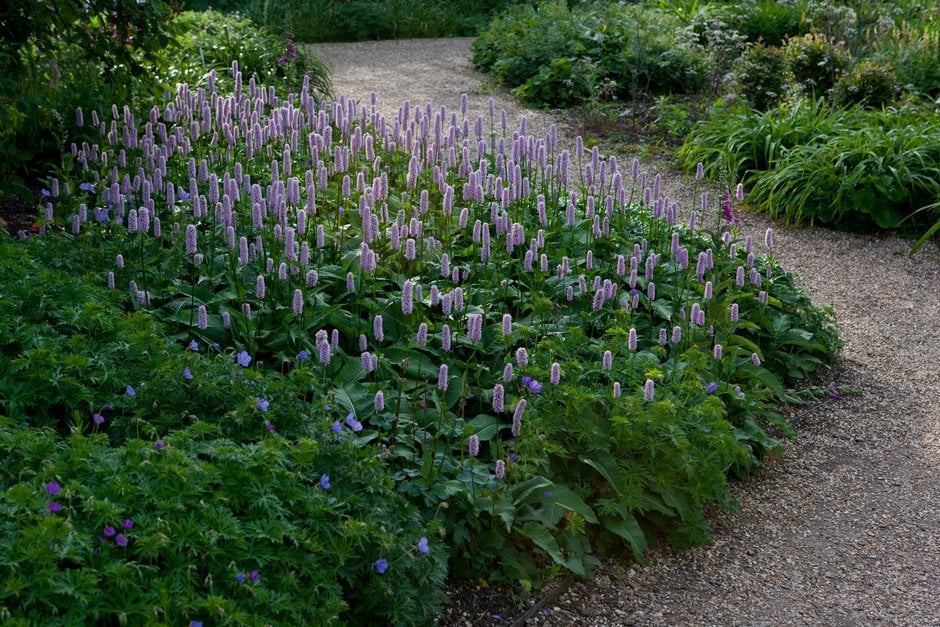Bistorta officinalis
common bistort
A vigorous rhizomatous, semi-evergreen perennial to 75cm tall, with prominently veined, ovate mid-green leaves to 30cm long, and short, dense cylindrical spikes of small pale pink or white flowers in summer and early autumn
Other common names
dragonwortEaster giant
see moreEaster ledges
Easter magiant
Easter man-giant
gentle dock
great bistort
osterick
oysterloit
passion dock
patience dock
patient dock
red legs
twice-writhen
adderwort
snakeweed
bistort
Size
Ultimate height
0.5–1 metresTime to ultimate height
2–5 yearsUltimate spread
0.5–1 metresGrowing conditions
Moisture
Moist but well–drained, Poorly–drainedpH
Acid, Alkaline, NeutralColour & scent
| Stem | Flower | Foliage | Fruit | |
| Spring | Green | |||
|---|---|---|---|---|
| Summer | Pink | Green | ||
| Autumn | Pink | Green | ||
| Winter | Green |
Position
- Full sun
- Partial shade
Aspect
West–facing or South–facing or East–facing
Exposure
Exposed or Sheltered Hardiness
H7Botanical details
- Family
- Polygonaceae
- Native to GB / Ireland
- Yes
- Foliage
- Semi evergreen
- Habit
- Clump forming
- Genus
A genus of herbaceous, rhizomatous perennials with erect, unbranched stems, bearing short terminal spikes of small, white or pink, bell-shaped flowers
- Name status
Correct
- Plant range
- Europe, N & W Asia
How to grow
Cultivation
Ideal for any moist soil in sun or shade, although it is tolerant of dry soils
Propagation
Propagate by division in spring or autumn
Suggested planting locations and garden types
- Cottage and informal garden
- Wildflower meadow
- Wildlife gardens
Pruning
Deadhead faded spikes
Pests
Generally pest-free
Diseases
Generally disease-free
Get involved
The Royal Horticultural Society is the UK’s leading gardening charity. We aim to enrich everyone’s life through plants, and make the UK a greener and more beautiful place.

